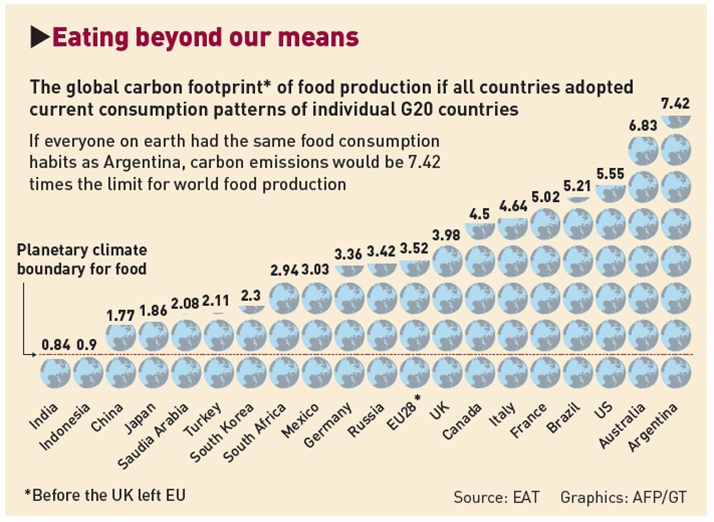G20 carbon ‘food-prints’ highest in meat-loving nations: report
Source: AFP Published: 2020/7/16 19:03:41

If everyone alive ate steaks and dairy the way Brazilians and Americans do, we would need an extra five planets to feed the world, according to the first report to compare the carbon emissions from food consumption in G20 nations, released on Thursday.
Among the world's top economies, only the per capita carbon "food-prints" in India and Indonesia are low enough to ensure the Paris climate target of capping global warming at 1.5 C, according to the Diet for a Better Future report.
Producing food for Earth's 7.7 billion people is responsible for a quarter of the global carbon emissions that drive climate change.
About 40 percent of that comes from livestock production and food waste, with the rest generated by rice production, fertilizer use, land conversion and deforestation to accommodate commercial crops.
"Currently, individuals in a handful of countries are eating way too much of the wrong foods at the expense of the rest of the world," Brent Loken, global food lead at WWF and lead author of the report, told AFP.
These imbalanced diets by a relative handful of rich countries are "to the detriment of climate, health and economies," he said. The report by EAT - an Oslo-based nonprofit that has led peer-reviewed research on the nexus of diet, health and climate change - also rated G20 national dietary guidelines, projecting the carbon footprint they would produce if followed.
Interestingly, this ranking roughly mirrors actual consumption.
Argentina tops the list with a diet exceeding climate thresholds nearly five-fold, followed by Canada, Brazil, the US, Russia and Australia.
At the other end of the spectrum, the countries with the most climate-friendly dietary guidelines are Indonesia, India, South Korea, China and Japan.
Posted in: CROSS-BORDERS